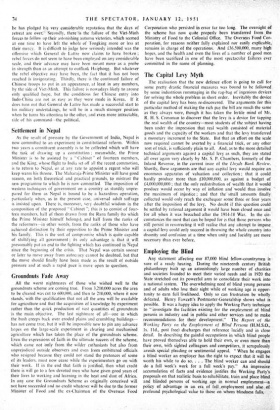Groundnuts Fade Away
All the worst nightmares of those who wished well to the groundnuts scheme are coming true. From 3,210,000 acres the area to be cleared was cut to 600,000, and then to 210,000, where it now stands, with the qualification that not all the area will be available for agriculture and that the acquisition of knowledge by experiment rather than the quick production of vast quantities of groundnuts is the main objective. The last nightmare of all—one in which the bush creeps back over eroded plains and crumbling buildings— has not come true, but it will be impossible now to pin any advance hopes on the large-scale experiment in clearing and mechanised agriculture which has taken the place of the groundnuts scheme. Even the expressions of faith in the ultimate success of the scheme, which came not only from the wilder enthusiasts but also from unprejudiced outside observers and even from embittered officials who resigned because they could not stand the pretences of some of its leaders, must now cease while the experimenters go on with their work. If in the end that faith is justified, then what credit there is will go to a few devoted men who have given good years of their lives to working and learning in the heat and dust of Africa. In any case the Groundnuts Scheme as originally conceived will not have succeeded and no credit whatever will be due to the former Minister of Food and the ex-Chairman of the Overseas Food Corporation who persisted in error far too long. The oversight of the scheme has now quite properly been transferred from the Ministry of Food to the Colonial Office. The Overseas Food Cor- poration, for reasons neither fully explained nor easily explicable, remains in charge of the operations. And £36,500,000, many high hopes, and the health and even the lives of a number of good men have been sacrificed in one of the most spectacular failures ever committed in the name of planning.


































 Previous page
Previous page